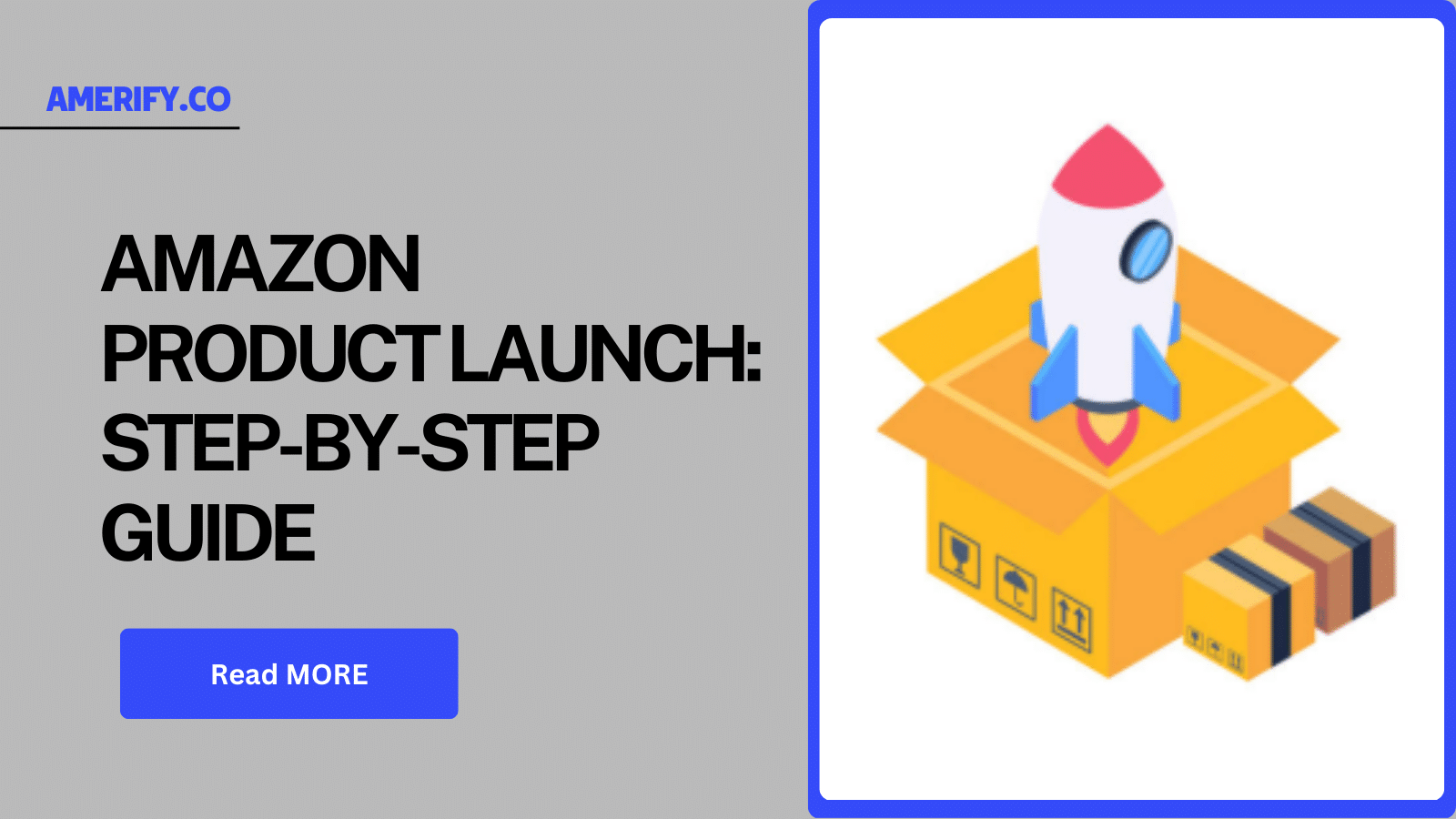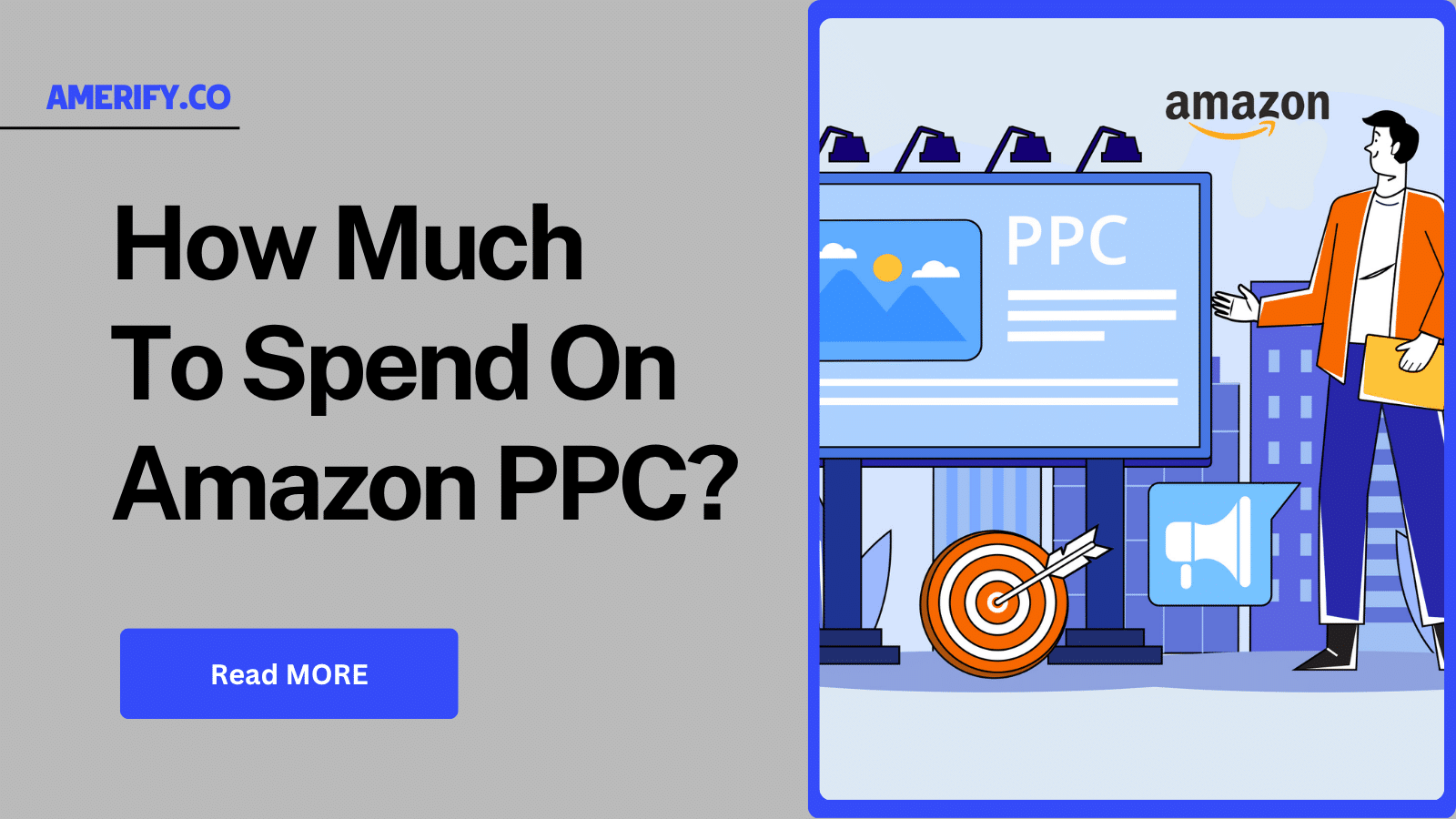Bringing a new product to market on Amazon isn’t just about listing and waiting. It requires a strategic launch that positions your product for visibility, conversions, and long-term growth. At Amerify, we specialize in Amazon product launch services that do exactly that.
Why a Strategic Amazon Product Launch Matters?
A successful product launch on Amazon sets the tone for your product’s performance across its entire lifecycle.
Amazon’s algorithm heavily rewards early momentum—fast sales velocity, strong reviews, and relevant search traffic can secure your spot on the first page. However, without a structured approach, most new products get buried beneath the competition.
Our Amazon launch strategies are tailored to break through that noise. Whether you’re a new seller or an established brand introducing your next bestseller, Amerify helps ensure your product is positioned to succeed from day one.
Steps to Launch a Product on Amazon

Launching a product on Amazon requires more than uploading a listing—it’s a structured, data-driven process that involves deep research, strategic execution, and continuous refinement.
Below are the essential steps to launching a product on Amazon, each illustrated with practical examples and scenario-based mini-cases to bring the strategy to life.
1. Product & Market Research
Before launching, it’s vital to validate your product idea against market demand, competition, pricing potential, and customer pain points.
The goal is to identify not just what sells, but what should sell better if offered with the right improvements.
For Instance
If exploring the collapsible water bottle niche, research might reveal that many top-selling bottles are difficult to clean and prone to leaking. A seller could then decide to launch a model featuring a wide-mouth opening and reinforced leak-proof seals.
Mini Case
Rachel, a first-time Amazon seller, used Helium 10 to analyze collapsible bottle trends. She discovered that most complaints centered around smell retention. After working with a supplier to develop a silicone model with odor-resistant lining, she highlighted this benefit in her listing and earned 23 reviews in her first month, 90% of which praised this unique feature.
Choose amerify and experience the difference our experts can make.
2. Comprehensive Keyword Research
Keyword research ensures your product is discoverable by matching your listing content with what shoppers are actively searching for. Prioritize both short-tail and long-tail keywords with high relevance and search volume.
For Instance
For a pet grooming kit, keyword research may reveal valuable terms such as “dog grooming scissors,” “home grooming tools for dogs,” and “quiet pet clippers.” These keywords are then mapped across the listing and advertising copy.
Mini Case
An emerging pet accessories brand preparing to launch a grooming kit hired Amerify to perform deep keyword research. One of the insights was that many users searched “silent dog grooming” rather than “quiet clippers.” Adjusting the copy to include both variations helped boost organic visibility by 42% within the first two weeks of launch.
3. Listing Creation and SEO Optimization
Your product listing serves as the storefront—its quality directly impacts conversion rates. It should be rich in relevant keywords, visually engaging, and persuasive, with clear differentiation and answers to buyer questions.
For Instance
A neck and shoulder massager listing could include features like “deep tissue kneading,” “adjustable heat settings,” and “portable use,” while showing real-use images in home and office environments.
Mini Case
Kevin, an established Shopify seller expanding to Amazon, copied his DTC product descriptions word-for-word. Initial conversions lagged. With Amerify’s help, he rewrote the listing using targeted keywords, reordered bullets to emphasize pain relief and portability, and added lifestyle imagery. His conversion rate doubled from 7% to 14% in just 10 days.
4. Inventory Planning and FBA Preparation
Proper inventory planning ensures you’re neither understocked nor overstocked. Amazon rewards consistent availability with better ranking, while stockouts can set back early momentum. Planning should account for shipping lead times, sales velocity forecasts, and buffer stock.
For Instance
A seller planning to move 15 units/day during launch for a new kitchen scale should prepare 500–600 units to cover the first month and unexpected demand surges.
Mini Case
An electronics brand launching a new kitchen scale underestimated the impact of a Lightning Deal and ran out of stock in week two. As a result, their organic rank dropped significantly. In a future launch, they implemented Amerify’s stock planning model and held a 20% buffer inventory in an Amazon prep center. The improved availability kept their Best Seller Rank stable even during peak week
5. Launch Execution and Traffic Generation
When your listing goes live, visibility becomes the priority. This phase includes Amazon PPC ads, promotional coupons, social proof initiatives, and often external marketing through influencers or email lists to drive traffic and sales velocity.
For Instance
A home office chair launch might include keyword-targeted PPC campaigns, a 10% launch coupon, and collaborations with three remote work YouTubers who showcase the product in use.
Mini Case
A DTC furniture brand launching a minimalist desk chair on Amazon collaborated with micro-influencers on TikTok, generating 120,000 views in the first week. Paired with a discount campaign and strategic PPC, they sold out their initial inventory of 1,000 units in just 18 days and collected 40+ verified reviews during that window.
6. Post-Launch Analysis and Iterative Optimization
Once live, monitoring key metrics such as click-through rate (CTR), conversion rate, advertising cost of sales (ACoS), and keyword rank is critical. Adjustments to the listing, pricing, and ad strategy should be based on real-time data insights.
For Instance
If a product’s ad group for “compact blender” is getting clicks but few conversions, the title and images may need revision to emphasize portability, battery life, or capacity more clearly.
Mini Case
A fitness gear brand noticed that despite high ad impressions for “portable blender,” their conversion rate was below 5%. Upon review, Amerify’s creative team redesigned their hero image to show the blender inside a gym bag alongside protein powder. CTR improved by 38%, and conversion climbed to 11.5% within two weeks.
Proven Strategies for a Successful Amazon Product Launch
Executing a launch is not enough—success requires the right strategy. The following strategies are core to Amerify’s approach, combining proven Amazon marketing principles with practical, results-driven execution. These strategies ensure that a product does not just launch, but thrives in the competitive Amazon marketplace.
1. Full-Funnel Keyword Integration
Effective keyword usage spans every aspect of the product lifecycle—from listing optimization to backend search terms to PPC ad targeting. By aligning keyword strategy across all channels, Amerify ensures your product gains both visibility and relevancy in Amazon’s algorithmic ecosystem.
Example: A sleep mask equipped with built-in Bluetooth headphones would benefit from targeting “Bluetooth sleep mask,” “headphones for sleeping,” and “wireless sleep aid.” These keywords would appear in the title, bullet points, and ad groups, maintaining consistent positioning across all customer touchpoints.
2. Conversion-Driven Creative Asset Development
Visuals are often the deciding factor for a customer’s click-to-buy decision. Amerify emphasizes high-impact creative assets, including professional product photography, 3D renders, lifestyle imagery, and A+ Content. Each asset is strategically designed to reinforce trust, illustrate benefits, and reduce purchase hesitation.
Example: For a countertop air fryer, Amerify may use side-by-side comparison charts, lifestyle shots showing meal preparation, and close-ups of digital controls to build visual authority and drive conversions.
3. Launch-Phase Amazon Advertising Strategy
Advertising during the launch phase requires a balanced and aggressive approach. Amerify sets up tiered Amazon PPC campaigns—including auto, manual, and branded keyword campaigns—to drive high-quality traffic while strategically boosting keyword rankings.
Example: A yoga mat may begin with broad match targeting on “non-slip yoga mat” and “eco-friendly yoga gear,” followed by manual campaigns for top-converting keywords and retargeting campaigns for engaged shoppers.
4. Compliant Review Acquisition and Early Social Proof
Gaining early product reviews establishes trust and improves click-through rates. Amerify uses fully compliant methods such as the Amazon Vine program, post-purchase email sequences, and strategic follow-ups via Amazon’s “Request a Review” tool to collect valuable customer feedback early in the launch process.
Example: A new kitchen knife set enrolled in Vine can receive up to 30 reviews from trusted reviewers, giving the listing credibility in the eyes of prospective buyers.
5. Launch Promotions and Time-Sensitive Offers
Launch-period promotions help drive urgency and volume. Amerify advises on price positioning, coupon setup, Lightning Deals, and bundling strategies to generate buzz and stimulate initial traction without violating Amazon’s pricing policies.
Example: For a smart desk lamp, offering a 10% launch coupon and pairing it with a limited-time “Buy One, Get One at 25% Off” promotion encourages early adoption and higher cart values.
6. Ongoing Campaign Refinement and Growth Planning
A launch is only the beginning. Amerify continuously monitors campaign data to refine targeting, optimize bidding strategies, and identify scaling opportunities. This long-term approach ensures products not only perform well during launch but sustain their ranking and profitability.
Example: If post-launch performance indicates a drop in sales velocity after initial promos end, Amerify may recommend introducing new ad creatives, adjusting pricing, or expanding into complementary keyword categories to recapture momentum.
Let Amerify Launch Your Next Best-Selling Product
Unlike generic e-commerce consultants, Amerify is laser-focused on Amazon. We’re not offering one-size-fits-all solutions—we build tailored launch strategies based on real-time data, competitive analysis, and proven frameworks.
While many agencies only assist with listings or ads, we offer end-to-end product launch services, including:
- Competitive market analysis
- Full listing optimization
- Advertising campaign management
- Review acquisition strategies
- Post-launch performance monitoring
A look at competitor content reveals surface-level tips and vague recommendations. Amerify goes further by offering clients a hands-on, white-glove approach that simplifies the Amazon launch process while maximizing ROI.
Whether you’re launching your first product or adding to an existing catalog, the stakes are high, and the competition is fierce. Amerify provides the strategy, support, and execution you need to stand out.
Conclusion
Successfully launching a product on Amazon is a strategic process that requires expertise, thorough planning, and ongoing optimization.
By following the right steps—from market research and listing optimization to targeted advertising and post-launch refinement—you can position your product for long-term success in one of the world’s most competitive marketplaces.
Amerify specializes in crafting tailored Amazon product launch strategies, ensuring that every detail is executed with precision. Whether you’re a first-time seller or an experienced brand looking to expand, partnering with Amerify provides you with the support and insights needed to dominate your product category.
Get started with your Amazon product launch today and let Amerify’s expert team guide you through every phase for guaranteed results.



